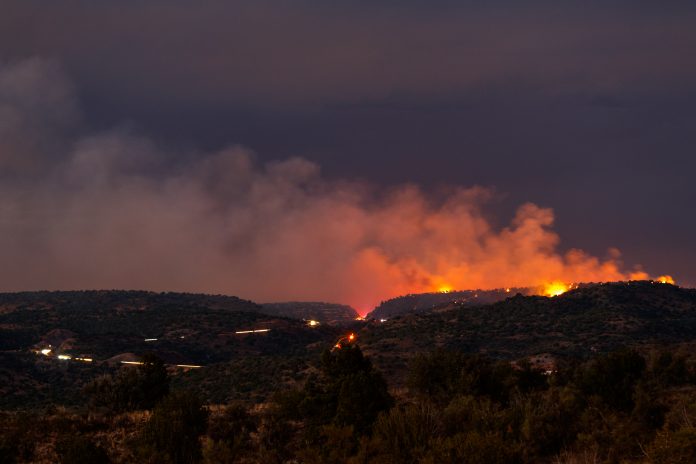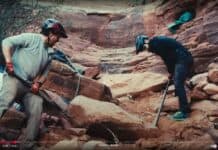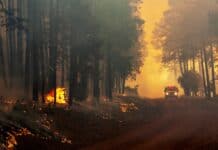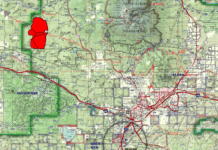
Over the weekend, the Verde Valley experienced its first relatively large wildfire of the 2020 fire season: The Pig Fire tearing through the brush like a wild boar near Pig Trough Tank in Hog Canyon.
The fire is burning in relatively flat terrain east of Interstate 17, far away from any structures and most other roadways. While it’s 40% contained and the burn is only about 500 acres as of Wednesday, Aug. 5, the fire should serve as a wake-up call to the dangers we all face from wildfire in the Verde Valley.
We are now comfortably in the midst of the monsoon, which means periodic rainstorms will be common through Sept. 15, and major blazes are a statistical improbability as they may be broken up and naturally extinguished by heavy passing thunderstorms bringing moisture to fire areas.
However, the extreme heat we have experienced dries out vegetation and makes potential fires significantly worse. Fire officials believe the Pig Fire was started by a catalytic converter from a vehicle that set the brush ablaze.
A single mechanical error on a motor vehicle along an isolated stretch of road has burned around 500 acres — and that was on flat terrain easily accessible from a major interstate.
Should a similar incident happen in Oak Creek Canyon, fire could quickly creep up the steep cliffs and then begin racing to the plateau with almost no way to stop it before it spread across several thousand acres, much like the Slide Fire of 2013.
U.S. Forest Service’s new strategy of aggressively tackling fires only works if fire crews can quickly and easily reach them.
Yet a delay of 20 or 30 minutes before some passersby makes a call, coupled with the drive time for a wildfire crew, means a single spark could quickly spread to several hundred acres before the first firefighter arrives on scene, and by then the battle is lost. Instead, firefighters will have to spend days calling in support teams, aircraft, equipment and crews to fight the spreading wildfire.
So please do your part.
If you’re out hiking or driving and you see fire or smoke, call 911. Do so as soon as possible if you see no emergency vehicles on the scene or in the area already fighting the blaze.
Try to be as precise as possible with your directions. If you have a GPS or a compass on your phone, please report those details to dispatch so they can pinpoint the exact location of the fire. With the Verde Valley’s terrain, knowing that a blaze is in one canyon or another or along one road or another means the difference between two routes for fire engines sent by dispatch.
If you own a vehicle that’s mechanical status is “questionable,” take it in for a tune-up.
Make sure your vehicle or trailer isn’t dragging chains that can cause sparks. Several years ago, right in the midst of fire season, crews from several agencies responded to a half-dozen fires along State Route 89A between Sedona and Cottonwood. They finally traced them back to a truck hauling a trailer which had been throwing up sparks for miles
Most fire agencies and governments have now lifted their fire restrictions on public and private land. But that does not mean it is 100% safe to start a campfire, or smoke, while hiking or camping.
If you do see someone smoking out on the trail, warn them of the fire dangers and politely ask them to extinguish their cigarette.
If you go camping and build a campfire, make sure it is 100% extinguished with both water and dirt before you leave the campsite. Do not leave a smouldering campfire and assume it will go out on its own. A small breeze could blow embers onto dry brush or dead leaves onto the fire, starting a wildfire.
If you go hiking, always carry a charged cell phone. Not only can it keep you safe should you be injured or need assistance or come across someone who does, but you can also call on the location of a fire caused by man, accident or lightning.
Christopher Fox Graham
Managing Editor




















